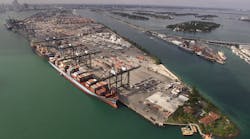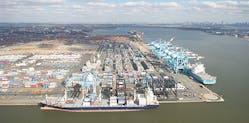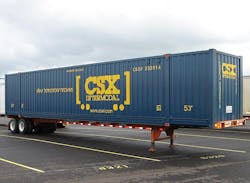Research by Arash Azadegan, Ph.D., a professor of supply chain procurement at Rutgers University, indicates that specific leadership qualities can more effectively speed recovery following a supply chain disaster.
Yet those skills sets shift depending on the supply chain “disaster phase” a company finds itself in, he argued during a presentation at the 95th annual meeting of the Transportation Research Board (TRB) being held this week in Washington, D.C.
“Because of JIT [just in time] practices, the Internet, and globalization, the ‘dominoes’ of the supply chain are now very close together – and the closer they are, the faster they fall,” Azadegan said. “It’s what called the ‘ricochet effect.'"
Based on research he began five years ago and using what’s known as “critical incident technique” largely used to evaluate customer service levels in the airline industry, Azadegan started examining what traits exhibited by supply chain managers and VPs would help – or harm – disaster recovery efforts.
His study also encompassed a review of 58 disruptions within a particular global automotive supply chain, then identifying what the leaders did during the response and recovery or “R2” the process to achieve success.“We identified certain characteristics that kept coming up in research, and resulting from them a pattern of success when [supply chain] disruption occurred,” he said. “We also found that as the disruption changes, the leadership characteristics should change with it.”
Over the “four phases” of a typical supply chain disruption identified by Azadegan – the “signaling” of the impending disruption, the start of the damage, the escalation/peak crisis point of the damage, and finally the dissipation/recovery period – the best supply chain managers were direct, decisive and controlling at the start, then switched to being more accommodating to input and ideas to gather solutions in the middle, before “switching back” to being more direct during the resolution phase.
Azadegan also noted four “tactics” that should accompany those “best in class” leadership skills during supply chain disruptions: Listening for warnings, scoping and containing the problem, look for solutions be they existing or new, and then as one executes solutions, to look for anomalies, he said.
“You have to start out ‘hard-nosed’ at the front end, then look for relationships in the middle – knowing when to ‘switch’ leadership tactics before it’s too late – then go back to being ‘hard-nosed’ to get the job done,” Azadegan explained.
Anne Strauss-Weider, the principal with management consulting firm A. Strauss-Weider Inc., provided examples of how such supply chain leadership skills came into play during Hurricane Sandy’s impact upon the Port of New York and New Jersey.
“This was abrupt and rapid disrNo lives were lost at the port but the facilities sustained “significant damage” that put the port out of commission for a week. Strauss-Weider added – and during Thanksgiving week, no less, when inventories are typically distributed across the country ahead of the Christmas holiday.
“Some 57 vessels and 10,000 containers were diverted from the port [of New York and New Jersey] with 8,000 containers ending up in Norfolk [Virginia],” she said. “That port got disrupted for months – they were not used to that volume.”
This, then, is where leadership skills and relationships became critical, Strauss-Weider said.
“Everyone cooperated, sharing fuel and vessel space. The storm also occurred during union negotiations but everyone worked – everyone knew the port needed to get back on line,” she said.
One drayage carrier – International Motor Freight – lost 110 or 130 brand new trucks; part of the total of 2,500 drayage trucks destroyed by Sandy. “But they got new ones in there as dealerships from around the region responded,” Strauss-Weider noted.
All of the port’s radiation scanning portals were destroyed by the storm and it could not reopen without them. So the Dept. of Homeland Security leased a Boeing 747 jetliner and flew in new ones from around the country.Down in Norfolk, VA, railroad CSX established new intermodal route from there to New York by flying in locomotive engineers and qualifying them on the new route – allowing containers re-routed to Norfolk to come back to New York.
“All those business relationships working together, whether at the individual or organization level, and were key,” she said. “Everyone figured out what worked and didn’t.”
Rutgers’ Azadegan added that the reason leadership skills are so critical during a supply chain crisis like the one Strauss-Weider noted is that managers are responsible for people, product flow, and ultimately profits.
“These are emotional situations, even in supply chain – jobs, inventory and profits are at stake, and beyond that, suppliers, customers, communities, and families of employees, etc., are at risk as well,” he stressed.
“The question then becomes what should he or she do to begin with during a crisis: Panic? Obviously not,” Azadegan noted. “You need to ask for feedback and information, sure, but how long? There is only a short time that [a manager] can be visionary and academic. Because disruptions are rapidly moving situations – if you don’t act, the situation changes and opportunity is gone. They are unforgiving.”






